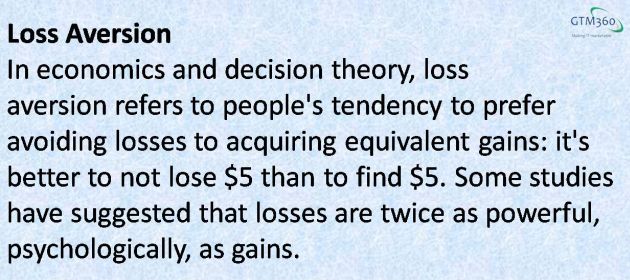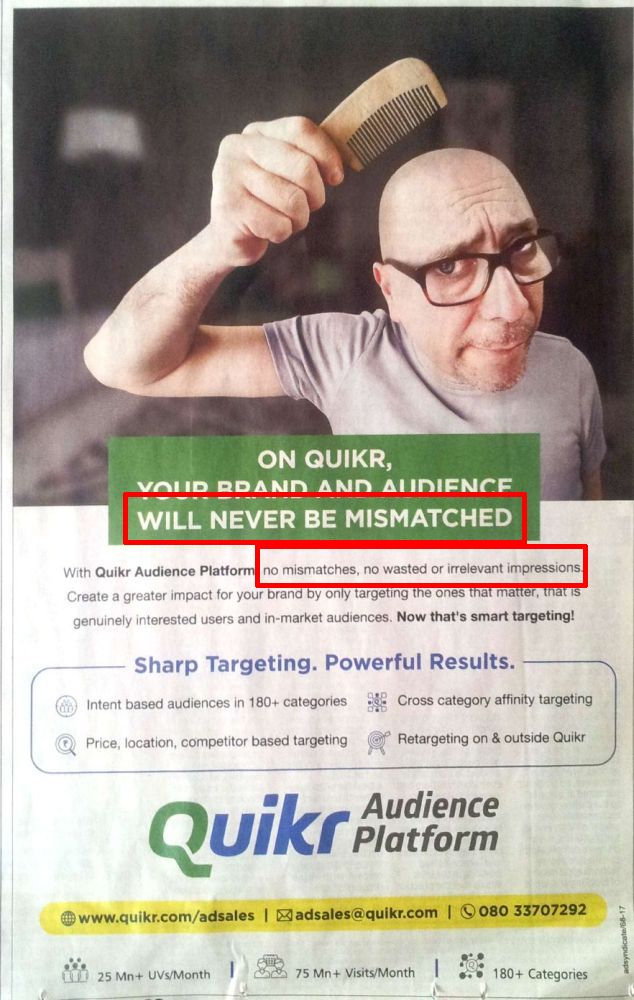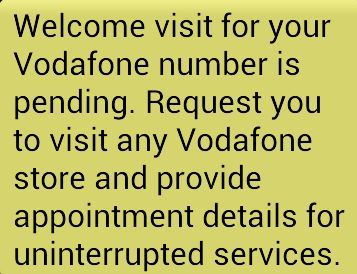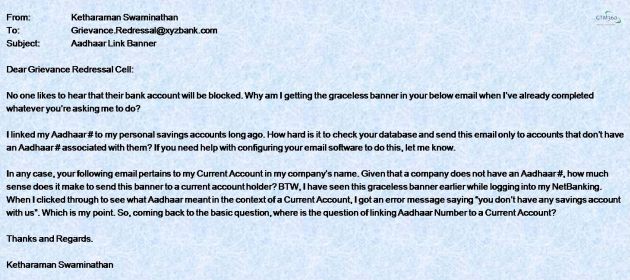“If it’s not Boeing, I’m not going”
– Tagline of Boeing ad.
All through my career in sales and marketing, I’ve been exhorted to write in positive style. The strong guidance applied to copy in ads, email marketing, datasheets, brochures, case studies and other forms of marketing collateral (hereinafter referred to as “content”).
In my early days in software marketing, I worked for a company that developed a warehouse management software (“WMS”). By curbing theft from warehouses, WMS helped retailers and other industries to eliminate pilferage. Accordingly, the most natural way to position it was by emphasizing the “cut loss” message. However my boss at the time told me to convey the value proposition positively. Since I was a marketing greenhorn at the time, I went ahead and pitched it as “grow profits with WMS”.
But I was never comfortable with the contrived positive spin.
Over the following years, I regularly came across negative content in business communications. For example:
#1. GARTNER
Gartner's @PeterSonderg says if your org is not optimizing & creating new digital biz models you are falling behind #GartnerSYM
— Gartner (@Gartner_inc) October 2, 2017
Peter Sondergaard, SVP & Global Head of Research at Gartner, does not say “your org should optimize and create new digital biz models to march ahead”.
#2. MCKINSEY
In The future of grocery—in store and online, McKinsey Partner Louise Herring asserts “…there’s no reason why some of the technologies that can work in a financial-services world couldn’t also apply to many of the retailers that we have around the world.”
She does not put a positive spin by saying “there’s every reason why some of the technologies that can work in a financial-services world could also apply to many of the retailers we have around the world”.
#3. MICROSOFT
In his interview with the Financial Times (subscription required), Satya Nadella, CEO of Microsoft, declares “There is no walk of life that is not going to require computational understanding”.
He does not say “Every walk of life is going to require computational understanding.”
#4. QUIKR
Have a look at the launch ad of Quikr’s Audience Platform:
India’s #1 classified ads platform does not claim that “your brand and audience will always be matched”.
It’s not just in business.
Take popular literature. The Acknowledgments section of Neal Stephenson’s Quicksilver is full of negative statements.
Or politics:
Nothing here convinces me that enacting anything like this bill won't be a political catastrophe for the GOP. If I'm wrong, then we're done. https://t.co/K1cv2xyZ12
— Kurt Andersen (@KBAndersen) June 23, 2017
Or coaching:
This sales management coach is actually telling his audience to reframe a positive statement into a negative warning:
Nice illustration of how sales leaders can use -VE language to achieve +VE outcome. #LossAversion pic.twitter.com/snzjsQCiJC
— Ketharaman Swaminathan (@s_ketharaman) June 2, 2017
All our lives, we’re taught to communicate positively but why does negative style work so well for so many famous and successful people?
I think it’s because of the so-called Loss Aversion principle in consumer behavior.
In plain English:
The pain of losing is psychologically twice as intense as the pleasure of gaining, therefore people try two times harder to avoid a loss than to make a profit.
Loss aversion means that individuals (and companies) will make twice the effort to keep what they have than to get something new. The terms “what they have” and “something” refer to both materialistic things (e.g. money, house, car) and intangible stuff (e.g. status, self-esteem, brand image).
When applied to the context of warehouse theft, the loss aversion principle would suggest that the urge to avoid losses (caused by pilferage) will provide stronger motivation for a company to act than the desire to make profits.
This was proved in practice when we created a Marketable Item based on the “cut losses” angle for one of our customers many years later. The lead generation campaign based on this negative message received a much better response than the earlier one using the contrived “grow profits” positive spin.
So, negative messaging style can be effective at times in marketing content.
Sometimes, it might be the only way to run a customer outreach campaign – a campaign based on contrived positive copy can backfire badly.
I saw this recently when a company needed to communicate an unpleasanat message. Instead of using negative copy, it sugarcoated its message. This eventually led to a serious blow to its reputation.
This happened with a leading Mobile Network Operator from whom I’ve bought several mobile phone connections over the past 10+ years. All connections were in my personal name.
Consequent to the Goods & Services Tax regime that came into effect from 1 July 2017, my CA firm pointed out that I could claim tax credit on my mobile phone bills if the connections were in my company’s name. I visited the MNO’s store to request a transfer of some of my connections to my company’s name and submitted the required KYC documents. One day later, the new SIM card in my company’s name got activated. So far so good.
A couple of days later, I got the following SMS from the MNO:
Since my new connection was already active, I didn’t believe anything was pending from my side. Besides, this MNO has a track record of sending messages that even its own staff can’t understand.
Therefore, I ignored this Call To Action.
Two days later, I couldn’t make any calls. Whenever I tapped the green-colored call button on my smartphone, I got an automated message informing me that my outgoing calls were blocked due to failure of my KYC verification.
I was very upset – this was the first time in my 15+ years of using a mobile phone that I’d lost service. Had someone polled me at that very moment, I’d have rated this MNO’s CX as the worst in the world (across all industries!).
Anyway, what was done was done. I went back to the store, jumped through several hoops and got this problem sorted out.
But I also took a vow that I’d never buy any Value Added Service from this company because, for some reason apparently mandated by India’s telecom regulator, every VAS purchase calls for fresh KYC, which, as I learned, could lead to loss of service.
Now, let’s say the MNO used a different Call To Action:
Your verification has failed. Please visit our store for re-verification.
It’s direct. It would’ve triggered instant action from me. I wouldn’t have suffered loss of connection. While it sounds negative, this CTA would’ve been effective unlike the sugarcoated message used by the MNO that lulled me into inaction and put me through a lot of trouble later.
My takeaway from the overall experience was that the MNO had made the unpardonable mistake of stopping service for a paying customer. In the end, I couldn’t care less that its CTA was worded positively.
Once marketers see the power of negative style in messaging, they might be tempted to recast all their content accordingly.
They should not.
Marketing professionals should use negative style very selectively and handle it with kid gloves when they resort to it. In a follow-on post, I’ll share my thoughts on the right context for using negative copy and outline a few best practices for running outreach campaigns based on them.
Watch this space!





